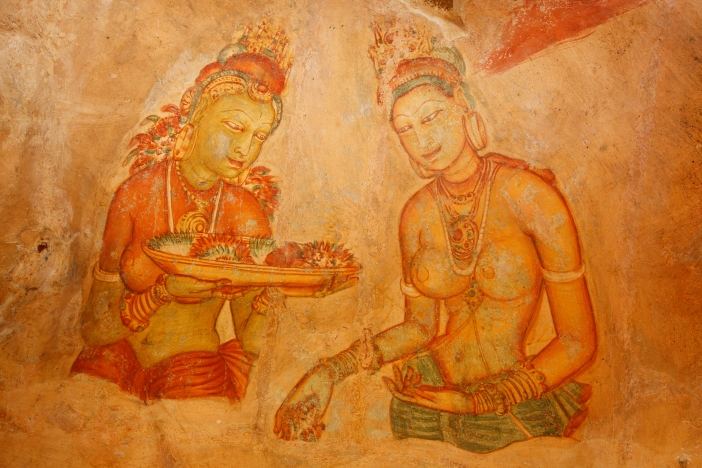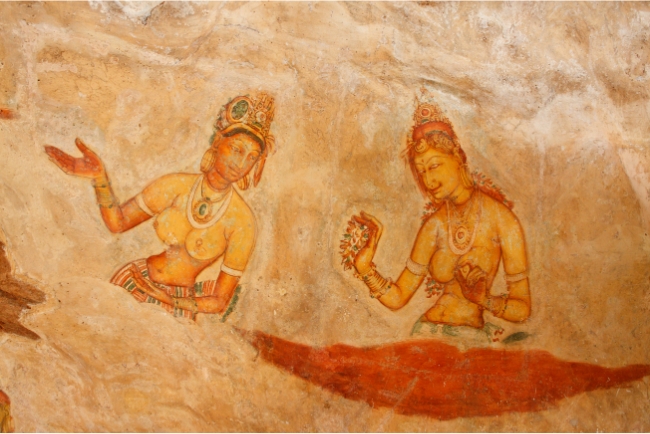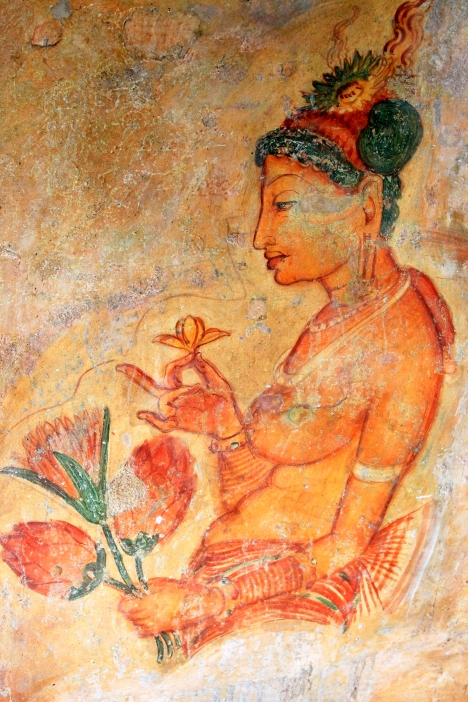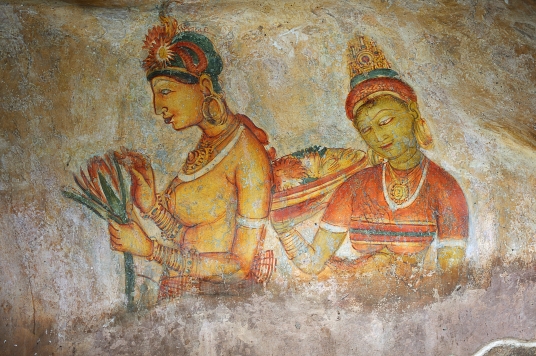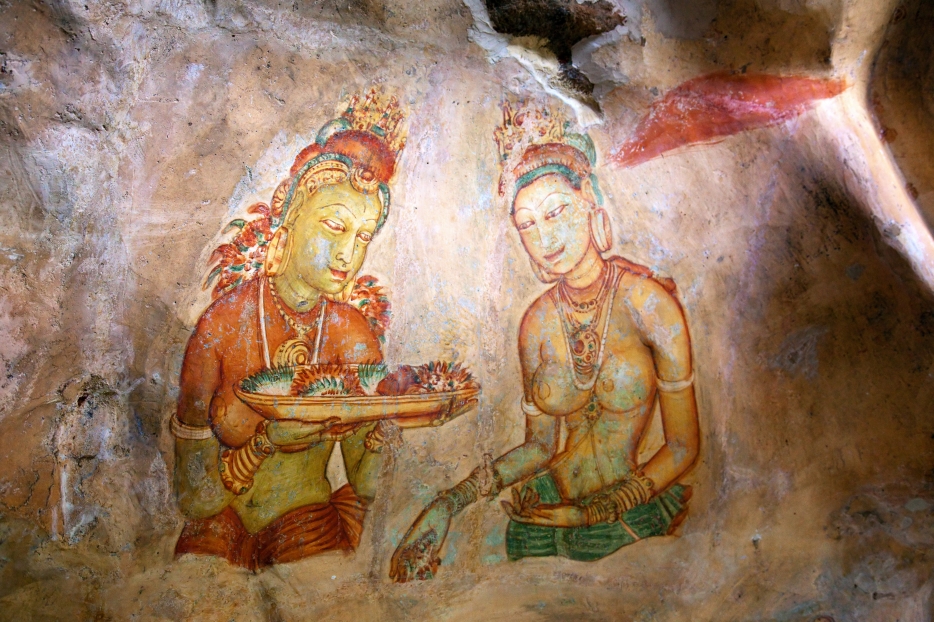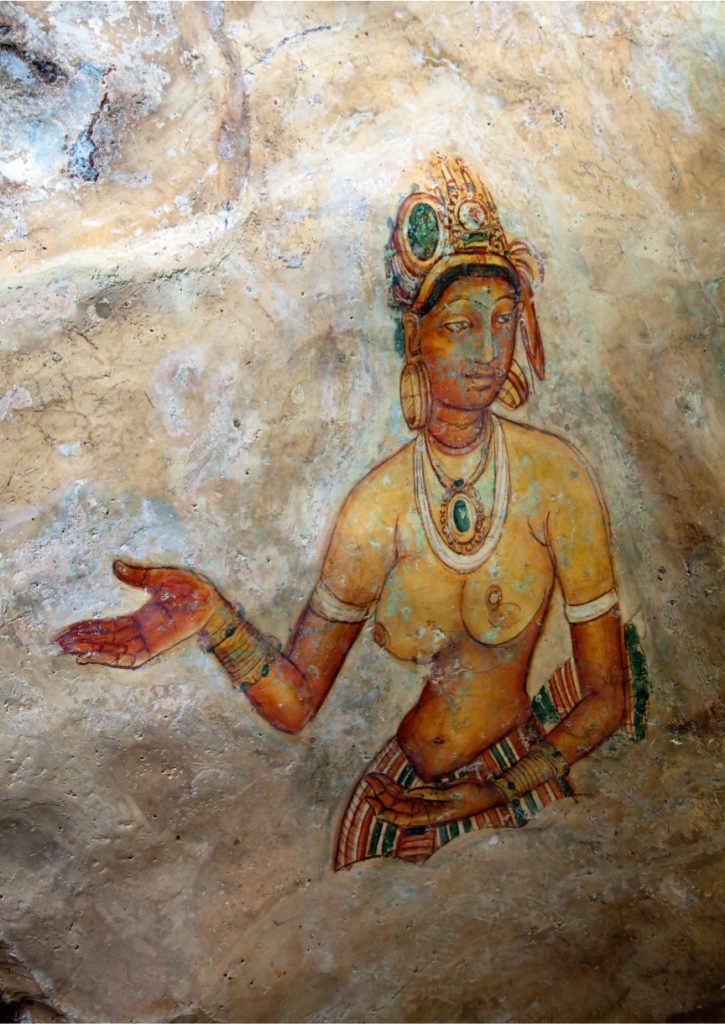Sigiriya frescoes are notable for their unique painting technique. In the traditional sense, they are not true frescoes, where paint is applied to wet plaster. Instead, they are more accurately classified as “fresco-secco” paintings, meaning the paint was applied to dry plaster. This technique requires a different approach to ensure the colors adhere well to the surface.
The identity of the women depicted in the Sigiriya frescoes remains a mystery, a matter of debate among scholars. They are believed to represent celestial nymphs (Apsaras), or in some opinions, they could be portraits of the court ladies of King Kashyapa or even representations of his consorts. However, the absence of definitive inscriptions adds to the enigma surrounding the figures in these frescoes.
Over time, the Sigiriya Frescoes have faced significant challenges due to environmental conditions. High humidity and temperature variations have contributed to their deterioration. with several conservation measures being undertaken to preserve these delicate works of art, including monitoring and controlling the microclimate around the paintings.
Close examination of the frescoes reveals intricate details that are not immediately apparent to casual observers. For example, the use of color shading and line work to describe the contours and expressions of the figures shows advanced artistic techniques far ahead of their time.
Originally, several more frescoes were spread across a larger area of the rock face. However, many of these have been lost due to natural erosion and vandalism. Today, only a portion of the original frescoes remain, seen in a sheltered depression about 100 meters above ground level.
The frescoes exhibit influences from various artistic traditions, including Indian and local Sri Lankan styles. This blend of artistic influences highlights the cultural exchanges in the region during the 5th century CE.
The Sigiriya Frescoes are part of a larger narrative that includes the entire Sigiriya complex. The rock fortress was built by King Kashyapa I as his capital and included elaborate gardens, palaces, and defensive structures. Understanding the frescoes within the context of this grand architectural and urban plan provides deeper insights into their significance.
Exploring these lesser-known details of the Sigiriya frescoes enriches our appreciation of this UNESCO World Heritage site, highlighting the complexity and sophistication of Sri Lanka’s ancient art and culture.
Sigiriya Frescoes Photos
